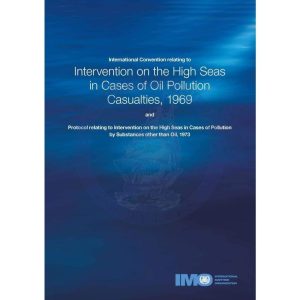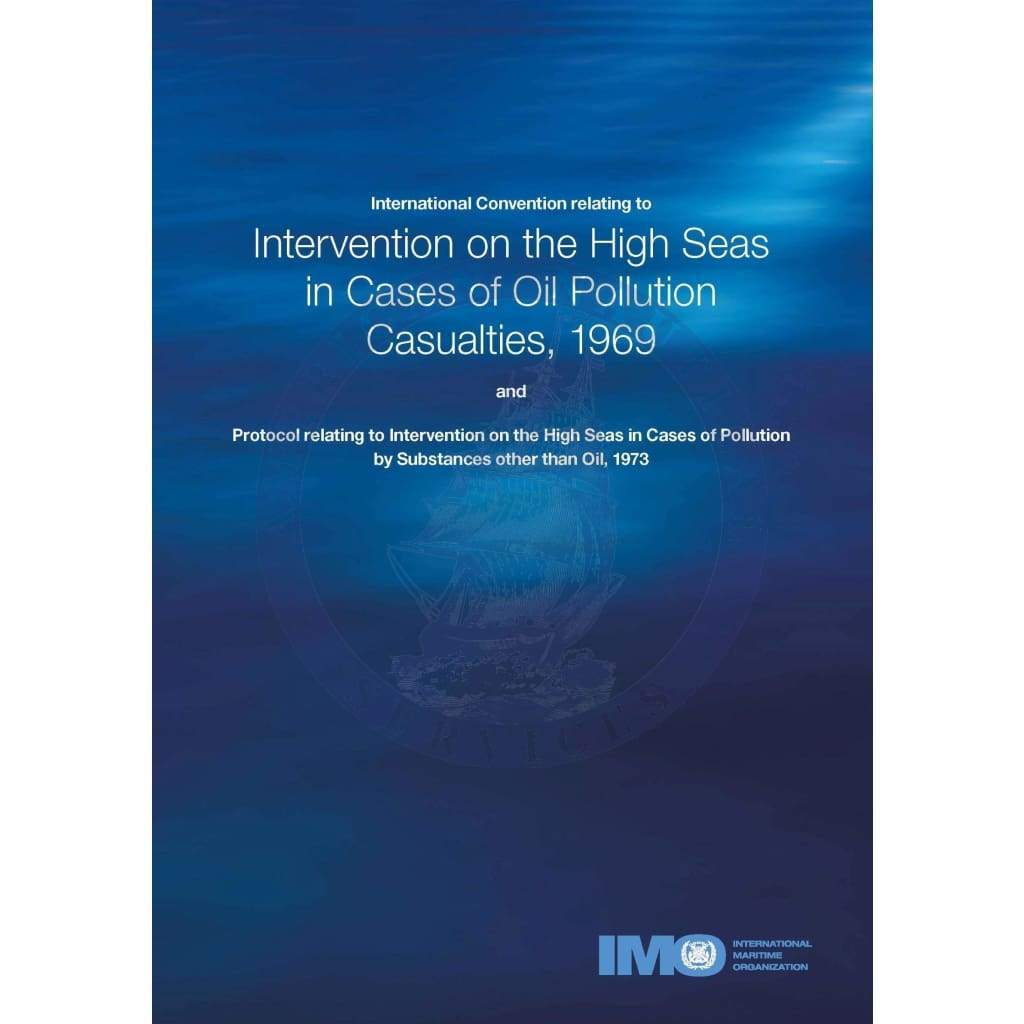
An International Legal Framework for Emergency Response to Maritime Oil Spills
Introduction: When Oil Threatens Our Oceans
In March 1967, the oil tanker Torrey Canyon ran aground off the coast of the United Kingdom, spilling over 119,000 tonnes of crude oil into the sea. The catastrophe became one of the first major marine oil pollution disasters and revealed a disturbing truth: there was no international legal framework to allow a coastal state to intervene and prevent such environmental destruction beyond its territorial waters.
In response, the International Convention Relating to Intervention on the High Seas in Cases of Oil Pollution Casualties (INTERVENTION) was born. This article dives deep into the INTERVENTION Convention—its origins, functions, real-world relevance, and future importance—making it understandable and useful for beginners, students, maritime professionals, and global readers alike.
What Is the INTERVENTION Convention?
The INTERVENTION Convention, formally adopted in 1969, is a multilateral treaty that grants coastal states the right to take necessary measures on the high seas to prevent, mitigate, or eliminate oil pollution resulting from maritime accidents.
Key Details
-
Official Name: International Convention Relating to Intervention on the High Seas in Cases of Oil Pollution Casualties
-
Adopted: November 29, 1969
-
Entered into Force: May 6, 1975
-
Administered by: International Maritime Organization (IMO)
-
Latest Update: 1973 Protocol expanded its scope to include substances other than oil
This Convention plays a crucial role in global marine environmental protection, especially in emergency scenarios involving grounded or damaged oil tankers outside national jurisdiction.
Why Was the INTERVENTION Convention Created?
The INTERVENTION Convention was born out of necessity. Prior to 1969, international law prohibited any coastal state from taking action on the high seas against foreign vessels, even if the vessel posed a threat of environmental catastrophe.
Historical Background
-
Torrey Canyon Disaster (1967): This incident prompted immediate global concern. The UK had to bomb the wrecked ship to prevent further spillage—an extreme action taken without legal backing.
-
Legal Vacuum: Under the 1958 Geneva Convention on the High Seas, ships on the high seas were under the exclusive jurisdiction of the flag state.
-
Urgent Reform: Countries recognized the need for a treaty that balanced environmental protection with sovereign rights of navigation.
Thus, the INTERVENTION Convention was adopted to allow intervention beyond territorial waters—under specific, controlled circumstances.
Scope and Objectives of the INTERVENTION Convention
The primary goal of the Convention is to enable rapid and lawful emergency response to serious oil pollution threats on the high seas.
Main Objectives:
-
Empower coastal states to take direct action against pollution threats from foreign ships beyond their territorial waters.
-
Establish legal criteria for intervention to prevent abuse or conflict.
-
Ensure accountability and communication with flag states and affected parties.
-
Minimize long-term environmental damage by allowing quick decisions in crisis situations.
Initially, the Convention applied only to oil pollution but was extended by the 1973 Protocol to include other hazardous substances, such as chemicals and liquefied gases.
Key Provisions and How They Work
When Can a State Intervene?
A coastal state may act on the high seas if:
-
A marine casualty has occurred or is likely to occur, and
-
There is a reasonable threat of major oil pollution to its coastline or related interests (e.g., fishing, tourism, marine ecosystems)
Such intervention may include:
-
Directing the ship to a different location
-
Removing oil from a damaged tanker
-
Towing, offloading, or neutralizing hazardous cargo
-
Destroying part of the vessel if necessary
Notification and Compensation
The Convention also:
-
Requires prompt notification to the flag state, shipowner, and the IMO
-
Grants compensation rights to shipowners if the intervention was unjustified or excessive
-
Encourages cooperation and scientific consultation before taking extreme measures
Real-Life Applications and Case Studies
1. The Sea Empress Incident (1996, UK)
Although this occurred within UK territorial waters, it highlighted the value of quick and decisive intervention. Approximately 72,000 tonnes of oil spilled, severely affecting marine life and coastline tourism. Had the ship drifted beyond the UK’s jurisdiction, a treaty like INTERVENTION would be essential.
2. Erika and Prestige Disasters (1999, 2002)
In the case of the Erika and Prestige, aging tankers broke apart in the Bay of Biscay and off the Spanish coast. These spills led to thousands of kilometers of coastline pollution. Spain and France cited INTERVENTION principles to justify actions against the tankers as they moved beyond national waters.
3. South-East Asia: Traffic Hubs at Risk
With busy sea lanes in the Strait of Malacca and South China Sea, regional navies and coast guards use INTERVENTION guidelines in their emergency preparedness plans, especially concerning aging tankers or vessels carrying crude oil.
Relevance for Various Audiences
For Beginners and General Readers
The INTERVENTION Convention ensures that when an oil spill threatens a country’s waters, action can be taken—even if the ship is in international waters. This prevents the “hands-off” approach that existed before 1969.
For Students and Researchers
This Convention offers a compelling case study in international maritime law, state sovereignty, environmental policy, and emergency governance. Its balance between environmental protection and freedom of navigation is an often-discussed topic in legal academia.
For Professionals and Industry Experts
Maritime authorities, oil transport companies, and environmental agencies use the Convention to:
-
Draft national response protocols
-
Coordinate with international partners (flag states, IMO, insurers)
-
Define legal boundaries during complex rescue or salvage operations
-
Train response units and conduct drills based on INTERVENTION clauses
Modern Developments and Trends
1. Broadening the Scope: The 1973 Protocol
To address rising chemical and hazardous material transport, the 1973 Protocol expanded the Convention to include:
-
Noxious liquid substances
-
Liquefied gases
-
Radioactive materials
-
Other potentially harmful cargo
This reflects the evolving risk landscape of modern maritime commerce.
2. Integration with Other Conventions
The INTERVENTION Convention works alongside:
-
MARPOL (1973/78): For ongoing pollution prevention
-
OPRC (Oil Pollution Preparedness, Response and Co-operation Convention, 1990): For coordinated oil spill response
-
UNCLOS (1982): Establishes broader jurisdictional rights of coastal states over exclusive economic zones (EEZs)
This legal synergy enhances global coordination in preventing environmental damage.
3. Technology and Early Detection
With satellite monitoring, real-time AIS (Automatic Identification Systems), and drone surveillance, coastal states can:
-
Detect distressed vessels sooner
-
Evaluate pollution threats in advance
-
Justify INTERVENTION actions more precisely
Digital technologies make proactive risk mitigation more achievable than ever.
Key Challenges and Criticisms
Despite its strengths, the INTERVENTION Convention is not without challenges.
Common Issues
-
Subjective threat assessment: What constitutes a “threat of major pollution” can be open to interpretation.
-
Diplomatic friction: Intervening on foreign vessels in international waters may strain relations.
-
Technological limitations: Developing countries may lack the tools to monitor or act beyond their EEZ.
-
Slow legal updates: Modern threats like plastic pollution or deep-sea mining impacts are not currently addressed.
Addressing these requires regular revisions, inclusive dialogue, and investment in maritime monitoring capacity.
FAQs – People Also Ask
What is the INTERVENTION Convention?
It’s an international treaty that allows coastal states to intervene beyond their territorial waters to prevent or mitigate serious oil pollution from maritime casualties.
What is the purpose of the 1973 Protocol?
The protocol extended the original Convention’s scope to include hazardous substances beyond oil, reflecting the changing nature of maritime trade.
Can a coastal state destroy a foreign vessel under this Convention?
Yes—but only if necessary to prevent major pollution, and only after notifying the flag state and consulting relevant parties.
How does INTERVENTION differ from MARPOL?
INTERVENTION is for emergency, reactive intervention, while MARPOL is for preventative measures and ongoing pollution control.
Conclusion: Protecting Our Oceans, One Convention at a Time
The INTERVENTION Convention stands as a critical tool for environmental protection and maritime governance, enabling nations to act swiftly in times of crisis—without violating international norms. As global maritime trade grows and new environmental threats emerge, its relevance continues to expand.
From students studying international law to coast guards patrolling high-risk waters, understanding the INTERVENTION Convention means recognizing the legal right—and responsibility—to protect our shared seas.
🌊 Call to Action:
Explore how your country or organization supports INTERVENTION implementation. Stay informed, and advocate for stronger enforcement of environmental laws at sea.
🔗 Further Reading:
References / Further Reading
-
IMO. (1969). Convention Relating to Intervention on the High Seas in Cases of Oil Pollution Casualties.
-
IMO. (1973). Protocol Relating to Intervention in Cases of Pollution by Substances Other Than Oil.
-
United Nations. (1982). United Nations Convention on the Law of the Sea (UNCLOS).
-
Pew Charitable Trusts. (2023). Global Ocean Governance and Oil Spill Response.
-
World Maritime University. (2020). Oil Pollution and International Maritime Law.

